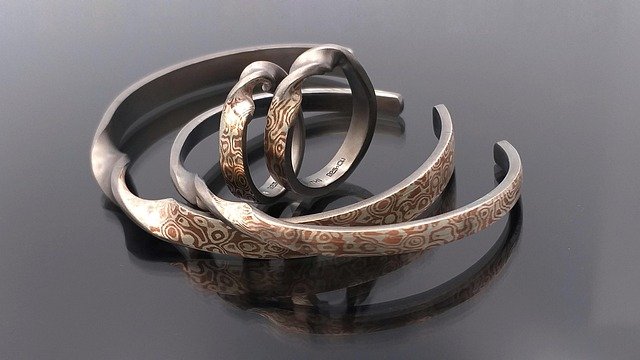Revive Your Skin with Advanced Laser Therapy
Laser skin treatment has transformed modern skincare by offering targeted, non-surgical solutions for a variety of concerns. Using focused light energy, these procedures stimulate collagen, accelerate cell renewal, and improve tone and texture. Discover how laser therapy can refresh your complexion, reduce scars, remove unwanted hair or tattoos, and deliver long-lasting results with minimal downtime. Learn about treatment types, benefits, typical session experiences, costs, and potential risks to make an informed decision.

Laser treatments have become a mainstay in aesthetic medicine, offering precise, non-invasive ways to improve skin appearance and health. By delivering concentrated light into the skin at controlled depths, lasers prompt the body’s repair mechanisms—encouraging new cell growth and collagen formation. The result is a smoother, firmer, and more even complexion over time, with treatment plans tailored to individual needs.
How laser therapy works
During a session, a clinician uses a handheld device that emits pulses of focused light. Different wavelengths and pulse durations target specific structures—pigment in sunspots, the hemoglobin in thread veins, hair follicles, or the deeper dermal collagen network. The light converts to heat where it’s absorbed, creating micro-injury zones that stimulate the skin’s natural healing response without damaging surrounding tissue. Practitioners select settings based on the patient’s skin type, the condition being treated, and desired downtime, which is why consultation and customization are important.
Skin concerns lasers can treat
Laser and light-based devices are versatile and can address many common dermatologic issues, including:
- Fine lines and wrinkles
- Acne scars and other types of scarring
- Sun damage and age spots (hyperpigmentation)
- Uneven skin tone and texture
- Enlarged pores
- Rosacea and persistent facial redness
- Unwanted hair
- Tattoo removal
Some systems are designed for aggressive resurfacing (ablative lasers), while others (non-ablative lasers and intense pulsed light devices) work more gently with less recovery time. The choice depends on how dramatic the improvement needs to be and how much downtime you can tolerate.
Benefits of laser skin rejuvenation
Laser therapy offers several advantages for those seeking cosmetic skin improvement:
- Non-surgical: No incisions or general anesthesia are required, reducing many risks associated with surgery.
- Personalized: Settings can be adjusted to match skin tone, sensitivity, and the specific problem being treated.
- Encourages natural repair: By triggering collagen and elastin production, lasers promote durable structural improvements.
- Long-lasting effects: With appropriate skincare and sun protection, outcomes can persist for months to years; some concerns may require periodic maintenance sessions.
- Generally well tolerated: Most patients report only mild discomfort during treatment, often managed with topical numbing.
- Noticeable enhancement in texture and tone: Many people see a visibly smoother, more even complexion after a series of treatments.
What to expect during a treatment session
A typical journey begins with a consultation to review medical history, skin type, and goals. On the day of treatment:
- Preparation: The skin is cleansed. For many procedures, a topical anesthetic is applied to reduce sensitivity. Certain lasers may require no numbing at all.
- Protection: You’ll wear eye shields to guard against bright light.
- Treatment delivery: The practitioner glides the device over the target area. Sessions commonly last from 15 minutes to around an hour, depending on the size of the treatment area and the technology used.
- Sensations: Expect warmth and possibly a snapping or stinging feeling; most report the experience as tolerable.
- Aftercare: Your clinician will outline post-procedure instructions—often including gentle cleansing, moisturization, sunscreen use, and avoiding direct sun exposure until healing is complete.
Pricing overview
| Treatment Type | Average Cost per Session | Number of Sessions Typically Needed |
|---|---|---|
| Fractional Laser Resurfacing | $1,000 - $2,500 | 1-5 |
| IPL (Intense Pulsed Light) | $300 - $600 | 3-6 |
| Non-ablative Laser | $800 - $1,500 | 3-5 |
| Ablative Laser | $2,000 - $3,500 | 1-2 |
| Laser Hair Removal | $200 - $800 | 6-8 |
Prices are estimates and may vary by clinic, provider expertise, geographic location, and individual treatment plans. Independent research and a consultation are advised before making financial decisions.
Potential risks and side effects
When performed by trained professionals, laser procedures are generally safe, but possible side effects include:
- Redness and swelling immediately after treatment, usually resolving within days
- Temporary pigment changes—either darkening (hyperpigmentation) or lightening (hypopigmentation)
- Small risk of scarring, particularly with deeper or more aggressive procedures
- Infection if post-care instructions aren’t followed
- Rare burns or blisters from improper device settings
- Extremely uncommon eye injury if protective measures aren’t used
Selecting an experienced, board-certified clinician and following pre- and post-treatment guidance reduces the likelihood of complications.
Making the right choice
If you’re considering laser therapy, discuss your expectations, medical history, and any prior skin treatments with a qualified practitioner. Ask to see before-and-after photos of patients with similar skin types and conditions, and make sure the provider explains the number of sessions likely required, anticipated downtime, and how results will be maintained. Combining laser treatments with appropriate daily skincare—sunscreen, topical antioxidants, and moisturizers—often yields the best long-term outcome.
Laser treatments offer a powerful, adaptable set of tools for refreshing aging or damaged skin and addressing cosmetic concerns from hair to tattoos. With a personalized plan and a reputable provider, many people achieve meaningful, lasting improvements in skin tone, texture, and overall appearance.
This article is for informational purposes only and should not be considered medical advice. Please consult a qualified healthcare professional for personalized guidance and treatment.






